Hard agree with "actionless figure" - I realize that LinkedIn is the only mostly-non political form of social media we…
News 5/01/09
From Francisco Respighi: “Re: Sutter. Massive layoffs soon to be announced (by mid-May) at Sutter Health Information Services. According to an enterprise-wide communication today from Sutter CIO Jon Manis, the poor economy is to blame for the layoffs and the de facto termination of the Epic project. The economic downturn has in turn meant that affiliates cannot fund the adoption of the Epic EHR (an interesting spin, since it was Sutter Corporate, and not the affiliates, that mandated adoption in the first place). Officially, the Epic project is merely delayed at Sutter. However, the announcement then goes on to say that nearly all Epic staff will be terminated. Nowhere in the communication from Mr. Manis is the enormous cost of the Epic project itself cited as a root cause of the current fiscal crisis at Sutter.” Unverified. If you can confirm (say, with an electronic copy of the e-mail) then talk to me.
From Del Fuego: “Re: CCHIT. Bobbie Byrne has updated her LinkedIn profile to indicate that she works for CCHIT now.” Link. The pediatrician and former Eclipsys SVP is now clinical director at CCHIT.
From The PACS Designer: “Re: Twitter brain waves. Mr. H is skeptical about the usefulness of Twitter, so TPD wants HIStalkers to judge and comment about a University of Wisconsin participant in Epicland who used his brain waves to complete ‘GO Badgers’ by focusing on the R and S on the screen to complete the Badgers cheer! To complete the assignment, the participant focused on the letter N to complete the statement ‘Spelling with my brain’. The messages can be sent by focusing on ‘Twit’ at the bottom of the screen. Next, TPD wonders if he can spell a brainy ‘Faulkner’?” Link. At least we now know at least one Twit who thinks before Tweeting.
From Bogo Pogo: “Re: HIStalk. Any plans for a mobile version?” I confess that I don’t exactly know what that means. I can read HIStalk on the BlackBerry Bold and it reads fine, so I assume it’s hitting the WordPress Mobile plugin that’s been in place since the beginning. Is there something else needed to support mobile devices? Say, I could write the whole thing as a series of Tweets!
From James: “Re: Kaiser flash drive. The USB drive is password-protected (I got mine today) and the clerk gave me a wireless keyboard to enter my password twice. The data file is a PDF so almost anyone can view it if you have the password.” I’ve always been a big fan of using scanning and PDFs as a simple but highly cost effective (and paperless) electronic medical record. I like Kaiser’s approach.
Listening: great surf music from The Neptunes.
Just announced: athenahealth’s Q1 numbers: revenue up 41%, EPS $0.12 vs. $0.09, hitting earnings estimates.
Doylestown Hospital is featured on Apple’s iPhone 3G page for rolling iPhones out to docs, including giving them mobile access to Meditech. I got my Consumer Reports today and was amazed at how well Apple did in the computer reviews: #1 in all three laptop screen size categories, #2 in desktops, and #1 in support in both desktop and laptops by far (81% and 84%, respectively, blasting the #2 vendor with 55% and 61%, respectively). Of course, Apples cost twice as much, so you could buy two of anybody else’s and keep one as a spare for the same money.
Medicity and Intermountain Healthcare will host a free Webinar called “A Data-Driven Approach to Improving Hospital and Physician Care Collaboration” on May 14. And speaking of Medicity, the company’s new CMO, Gifford Boyce-Smith, will speak on translational medicine at the Delaware Health Sciences Alliance research conference next Wednesday.
McKesson employees in Carrollton, TX spent time putting together care packages and notes for wounded veterans in VA hospitals last week. Nationally, 14,000 McKesson employees created 16,000 of the packages.
David Blumenthal follows the current administration’s mantra: we believe in the free market in theory, but sometimes it doesn’t work and the government can manage it more efficiently (which generally means: Bush and his cronies were dangerous fools and anything Republicans advocated must be repudiated by expensive and massive retaliatory government intervention). Speaking Thursday about healthcare technology, he said, “It is clear that this field has not advanced (enough) … when left exclusively to the private sector so there is a public role” Sounds good, except when surveyed, the public didn’t give a whit about healthcare IT. Your benevolent government knows best, as it constantly reminds us.
I just realized that it’s almost the end of the month as I write this, so I checked the HIStalk stats (that’s Inga’s territory, so I generally stay out of it). Shazam! Over 90,000 visits and 126,000 page views for April, breaking the record set in March by over 15% and up 66% from a year ago. I can only say thank you for contributing to that number by reading. I can’t imagine the stats going up since surely it’s at the saturation point, but I was saying that a year ago. Maybe the industry is bigger than it looks sitting here alone and staring at a keyboard and monitor for hours.
CERN shares hit a 52-week high today, topping at $54.71 and closing at $53.80. Above is a five-year stock chart that you can’t read because I had to shrink it to fit, but it shows Cerner share price (blue), McKesson (green), Eclipsys (gold), and GE (red). Go Neal (he’s not just doing it for you – he owns $303 million worth himself).
Bored at work? Try Internet sensation Swinefighter. It’s lame, but addictive.
Jobs: Senior VP of Sales, Technical Project Manager, VP, Finance and Administration.
Consumer Watchdog says it has proof that Google used paid lobbying firms to try to influence the government on the economic stimulus act, which it speculates (without proof) means the company wanted the right to sell medical data. Google says it was lobbying to support healthcare IT standards and to protect consumer privacy. Consumer Watchdog says fine, prove it by releasing your lobbying records. End Act 1.
It’s like one of those cheesy used car companies that offers to loan you down payment money until your tax refund comes: IBM makes $2 billion available to customers who don’t have the patience for their government checks to arrive. Come on in, everybody rides!
Siemens announces Q2 numbers, with revenue and profit up big.
Another doctor criticizes electronic medical records in a national publication, Time in this case in a story called How to Fix Health Care: Four Weeds to Remove (Larry wasn’t one of them). One of the four weeds identified as choking off the medical garden is Computerize Everything. “It’s a complex topic that boils down to this: If we who do the medicine thought more computers would save us money, we’d buy them ourselves. In fact, sometimes we do. But the federal mandate to computerize and centrally connect the entire country’s medical records has little chance of saving money for anyone except the lucky insiders who sell the computers, software and support. Aside from their costs to us, electronic records are time-consuming — a constant distraction from patient care. They also put doctors on a slippery ethical slope; it’s pretty easy to bill more for the same services with a good EMR program. They are a dangerous weed being advertised as fertilizer.”
Sams’s Club says it’s ready to sell eClinicalWorks (although it manages to spell the company’s name wrong in the headline, putting a space before the “Works” part). I did a Google site search to find the page, which doesn’t come up in the site’s own search.
In Europe, Ronald Verni, former CEO of Sage Software, is named non-executive director of charge master software vendor Craneware.
An Ohio State University medical professor and cervical pathologist says his employer demoted him, cut his pay by 60%, and took away his laboratory after he publicly accused the university of botching tests for human papillomavirus. He’s concerned about the incorrectly diagnosed women, but the $100 million he’s suing for will apparently assuage his anguish. Since every TV addict in America feels qualified to judge people based on a superficial knowledge of whatever’s being judged, I’ll side with him since he sounds sincere and is amply qualified.
HERtalk by Inga
From Newlywed: "Re: Nobel Prize winner’s survey on women and mood lifting. Heck yeah … I think he is dead on. For me, sex and eating … helllooo? Unfortunately, I travel for my job, so I don’t spend many nights at home for the sex with my perfect, divine husband. But man, do I get to eat!"
From Lynn Vogel: "Re: MD Anderson and facilities. Appreciate your comments re: importance of facility ambiance to patients. Cancer patients face significant challenges and in many cases truly ‘life or death’ choices. Notwithstanding Mr HIStalk’s views about the relationship between the egos of healthcare CEOs and their facilities, it is easy to dismiss the importance of surroundings in providing a supportive and comfortable environment in which such choices can be made. And I would venture a guess that those most critical of healthcare facilities are those who have not had to experience them from the patient’s point of view."
DocuSys and CPSI team up to install DocuSys’ anesthesia solution at at Muskogee Community Hospital (OK). I have actually been to Muskogee, the town that Merle Haggard was proud to call home. I am pretty sure I ate some ice cream from Braum’s. Ymmm.
Silver Hill Hospital (CT) signs a five-year agreement with Medsphere to provide implementation, training, and support of Medsphere’s OpenVista EHR.
Froedtert & Community Health (WI) signs up for Epic Systems’ Care Everywhere network. The Care Everywhere network is designed to connect EMR information between different Epic systems and as well as third-party EMRs. Froedtert & Community Health is the second health system to sign up for the network, which the health system claims cost them $60,000.
McKesson promotes Randy Spratt to the newly created position of Chief Technology Officer. Spratt will also maintain his current role as executive VP and CIO.
Note to all you road warriors: while in a plane, experts recommend you sanitize your hands before eating and drinking, after retrieving something from the overhead bin, or after returning from the restroom. A little Purell and you cut your chances of getting infected by at least 40%.
Virtual Radiologic posts first quarter net income of $1.39 million ($0.09 per share), compared to $2.00 million ($0.12 per share) in the prior year period. Adjusted net income was up 40% from last year, coming in at $2.51 million, compared to 2008’s $1.88 million. Revenues rose to $28.6 million for the quarter, up 23% from last year.
Online learning and survey vendor Healthstream releases their Q1 financials showing net income of $878,000 versus $66,000 last year. First quarter revenue grew 19% over the previous year to $13.6 million.
If you are considering bariatric surgery, here’s some good news. Individuals with bariatric surgery reduce the prevalence of disease by 25%, compared the morbidly obese. Also, the rate of post-surgical complications has fallen 21% since 2002. Overall complication rates have also dropped (from 24% to 15%). Fewer complications also translate into lower cost of care.
Merge Healthcare announces its third straight quarter of positive net income. For the first quarter, Merge had net income of $2.8 million compared to a $7.9 million loss a year ago. Revenue was up 11% from 2008.
Researchers at Brigham and Women’s Hospital (MA) and Massachusetts General Hospital find that the use of integrated computerized medication reconciliation tools and process redesign were associated with a decrease in the number of unintentional medication discrepancies.



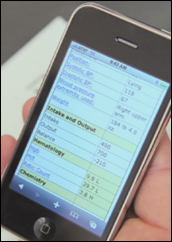

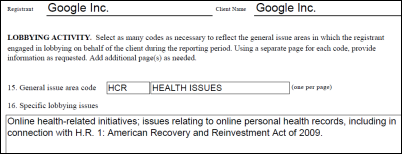
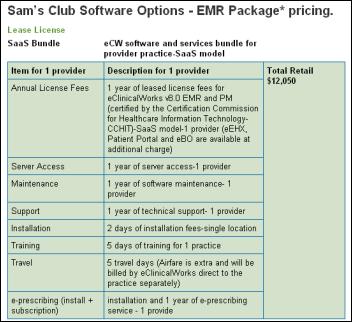










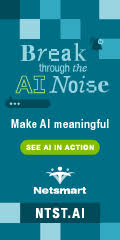






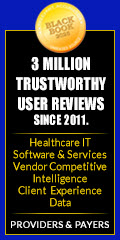

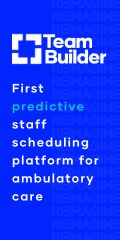





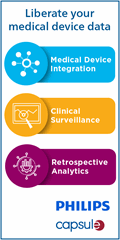





















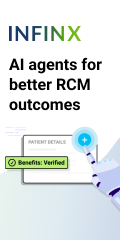


























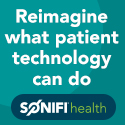







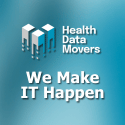
‘Loved the utilization of iPhone and Doylestown but wanted to clarify that Apple has consistently scored well in Consumer Reports for years. This is not something new.
‘Not going to get into Mac/PC discussion but if you are comparing apples to apples vs apples/oranges the price difference is not that disparate. Yup Apple products are an incredible form & function but in this hyper-vigilant, quick to report world if they didn’t work I believe you’d hear an uproar if you plopped down that kind of change for a pretty case. Non the less its a tool and whether its an iPhone or MacBook I enjoy the fact that I can focus on the output of the tool vs getting the tool to work.
Seems like the stimulus bill stimulated the press and the blogosphere way more than it has actually stimulated IT use or purchases.
All the accusations and incriminations of who’s making the back room deals is just silly. CMS is pulling the strings here and they’ve had this plan since earlier in 2000s when they were driving an HL7 standard to defne an EMR to do exactly what they got through in the stimulus bill.
People just need to get past all the noise, vendor bashing, concept bashing, system bashing, etc.
I think the real funny part is going to be when the old guard – Regenstreif, InterMountain and Partners will lobby to water it down or risk struggling to meet “meaningful use” and have to step back behind people who have since moved ahead with commercial technology.
As TPD (former CBer) and Mr. HISTalk (a ham operator?) could probably attest – it was sure fun to build a Heathkit, and you got an incredible sense of pride from it, but in the end, that ICOM or Kenwood (or Cobra for those less fortunate) turned out to be a pretty sweet rig!
Who knows though – maybe we can usher in a brief era of HealthKit – Build Your Own Systems again if enough money flows to the right lobby group or politician. (starting with Mr. Rockefeller)
Does anyone know how the open source Vista / MedSphere guys make promises around functionality and state / federal requirements. If you buy it does it come with a guarantee / best efforts to keep the software current with regulations?
If not, is that a risk the buyer just has to prepare for? Also, does Vista fall under state regulations and adapt per state already for the VA program or does it claim exception and only follow it’s own rules or federal rules?
Re: Lynn Vogel comments:
“Cancer patients face significant challenges and in many cases truly ‘life or death’ choices.”
As opposed to other hospitals where the decisions are much more mundane such as hot or cold breakfast, Motrin or Tylenol, and what time to wake up for surgery?
“And I would venture a guess that those most critical of healthcare facilities are those who have not had to experience them from the patient’s point of view.”
Maybe have not experienced because indigent care through the ED comes first and there is not enough money leftover to replace the old, worn furniture in the patient waiting areas much less build a waterfall next to the cafeteria.
Let me add that I’m I think it OK that MD Anderson has the choice to build very nice facilities or do other things with funds like provide more indigent care. And I’m OK with MD Anderson’s decisions on how to use the money they have.
However, I would expect that those decisions are not easy, that MD Anderson wrestles with these issues every time they face decisions on new facilities, and some acknowledgement that these are not easy decisions; as opposed to a defensive reaction at the suggestion that MD Anderson could use the money in other ways.
Re: Bariatric Surgery
Inga- The best thing about bariatric surgery is the increased survival statistics, leading to an extra 5 years in men and 7 years in women.
URL: http://www.google.com/search?q=bariatric+surgery+survival&rls=com.microsoft:en-us&ie=UTF-8&oe=UTF-8&startIndex=&startPage=1
Al
iPhone Manifesto
As a card-carrying Guy Kawasaki underground evangelist, I was abducted in 1999 by a PC-cult group and forced into MS servitude. Thanks to iPhone messiah, my intellectual property has been liberated from the shackles of DOS command line mentality to once again embrace the warm, soft, fuzzy GUI interface of Applelism; the faith of my childhood.
Mr. HISTalk – this statement is routinely put forward as true:
—
http://online.wsj.com/article/SB124104350516570503.html#mod=article-outset-box
Much in the same way Microsoft guards its proprietary software, commercial systems made by vendors including McKesson Corp. and Cerner Corp. are proprietary technology that don’t always allow them to easily talk to other vendors’ systems. By contrast, open source providers can share information freely and a worldwide network of software developers, WorldVistA, has emerged to offer new features, much like the community that supports the free Linux computer operating system.
—-
Vista goes through the exact same process as every other vendor when it comes to interoperability and history shows they haven’t been much further ahead at any step.
Why so much pixie dust associated with Open Source? There is nothing inherent in the development of Vista that makes interoperability one bit better technically. One could argue they’d be more willing to do interface projects than a Cerner or McKesson.
Anyone who knows technology or with a copy of MS Word and Open Office – pull down the “Save As” menu and look at the choices in MS Word and Open Office. Count them up and decide which is more “open”.
Regarding issues with MD Anderson…
In healhcare VALUE equals OUTCOMES divided by COST. Buildings increase COST dramatically and probably don’t affect outcomes. Cancer patients CANNOT afford those buildings nor can the current and future healthcare economy in America.
MD Anderson has not succeeded with it’s “build it” IT program and with some 900 staff in IT…they now face substantial lay-offs. It’s the CIO’s job to manage this situation and thus far it has not been managed. Now employees face the legacy of poor decisions by management.
Very interesting to me that as I read all of these comments re MD Anderson, I just returned from my 3 yr check up (all clear!) after having chosen to go there for treatment, as they have the distinction of being the top place to go for my type of cancer, even though I live many miles and states away. Obviously, I am thrilled with my outcomes and also very lucky to not have to be too concerned about costs and value. However, having been in many many hospitals across the nation as both a patient, caregiver and IT professional, it’s the only one I have been in that, when I updated my meds with the nurse in radiology, the next day when seeing both my physicians I was not asked the proverbial question “What medications are you on?” but instead “We see they updated your med list yesterday, is there anything else we need to add?” And sat in my surgeons office while he showed my my CT scan imaging, and gave me the thumbs up! And it doesn’t hurt that it’s a nice place to be with a couple of Starbucks and a hotel attached….
LackingTruth, I assume you work for one of the vendors, otherwise you’d be rooting for open source. The only losers in an open source ecosystem are the proprietary competitors. Everyone else wins.
Also when you say “there’s nothing inherent … that makes interoperability one bit better technically,” the point isn’t technically. Technically, everybody stores their data on disk, which must be accessed through programmatic means. So yeah, that part is the same.
What’s different is, in the open source system, you could confidently write your own interface, not ask McKesson or Cerner to do so. That’s unlikely. Or, more likely, hire a third party who does this professionally. Or, go to a different third party, and get a better price. Or, if someone is generous, go out to a repository of open source interfaces, and customize one to work for you. Or, given critical mass, go to a third party vendor who has a proprietary tool that helps build interfaces for you, something impossible without having access to the source.
And as crazy as all this might sound, look at MySQL as a kind of analogue. All kinds of third-party tools, both free and proprietary, work with MySQL. Everybody wins (until the project’s bought by Oracle.)
Re: Open Source
I _do_ work for a vendor, and in fact I do root for open source. We do use open source (e.g., Linux) in our products, and we would probably incorporate open source healthcare apps in our products if they were appropriate. (The laws of economics are at play in our internal organizations just as they are in the user market – we get no joy in spending resources for software development if we could leverage open source with equivalent function and quality.)
But after 30 years in the software biz I know what it takes to get open source ready for prime time high reliability production work in a healthcare environment – and it’s no small effort. Effectively using open source, especially with early stage releases, is a skill that is generally not found in healthcare provider IT organizations.
I have just seen an analysis of the open source CONNECT software coming out of the National Health Info Network prototype, and it is *ugly*. Granted, it is an early release, but early releases is all that is out there now in the healthcare apps space. I pity a provider organization that thinks they will save money by trying to implement with the current state of the art in open source – what they save in purchase dollars they will spend fivefold in internal software development resources. And then they will continue to spend to maintain their local kludge – and maintain the people that got it running, because when they leave, it will fall apart at the seams.
How many doctors offices run Linux rather than Windows? OpenOffice rather than Word?
I might suggest that with the federal mandates for EHRs, we might get the economies of scale that will bring down the prices of commercial systems to the point where it is no longer a barrier to broad implementation.
MDACC Patient
“Obviously, I am thrilled with my outcomes and also very lucky to not have to be too concerned about costs and value.”
You are lucky to not have to be concerned about costs…evryone else mostly is. I have a freinds who have cancer and don’t have the same luck…
Take care.
But, at the end of the day, is MySQL better than MS SQL or Oracle?
Re: pain of open source as it exists today,
Yeah, I mostly agree with your sentiments. I root for open source like I root for Aggie Football. It’s painful at times (e.g. almost all televised games), and my team isn’t always as good as the competition.
As far as MySQL goes, I will say that yes, it’s the best overall choice a lot of the time–let’s say, a third of the time. Obviously this kind of high-level, context-free summary isn’t very useful, and I’m not the expert on the topic; I’m just opinionated. MySQL was growing into a more full-featured, enterprise-capable SQL RDBMS…then Sun bought MySQL AB, then Oracle bought Sun, and the original owner of MySQL AB has forked the project. So we’ll see what happens.
I think the interesting question is: can open source software be better than its competition, in an enterprise vertical (like healthcare)? Clearly it can be better in the consumer space (see Firefox, 7zip, PDFCreator, Tomato router firmware) or for more targeted purposes (see Apache web server, SQLite, gcc, various web frameworks), but will we see an open source vendor create the best overall LIS, for example?
I don’t know, but I hope so.
All this Vendor / Open Source / Government stuff really just comes down to people and personalities.
Open Source eventully becomes a vendor because a buyer needs to know who they will turn to for updates, future regulatory compliance, assurance there will be someone there to fix a bug, notifiy them of software problem that would go unnoticed if someone didn’t tell them (that could hurt patients).
In order for open source to work, it needs an caretaker and that really seems to all come back to a government agency to take care of it. That’s where I have a problem with it.
Government agencies don’t make the most responsive “suppliers” nor the cheapest. They suck up lots of money, tell us how great they are, and perpetuate mediocrity on a good day. Most days aren’t so good.
If government subsidiizes a company to do it for them, which often happens, then we’d all be getting a system from EDS or Perot and how is that really different that getting a system from Epic, Cerner or McKesson?
Look at what has really gone on in the UK? The government, with the best of intentions, killed their market by granting concessions to a very few suppliers. It is an unmitigated disaster and an expensive one at that. Without the requirement to compete for a living – which vendors normally have do have – things get really messed up and complacency rules.
Government certainly has it’s place, but I’m not buying a car from a government run car company and I wouldn’t buy and EMR from a government run software company.
So, it comes down to one person responsible for getting an EMR having a relationship with one person who will stand responsible for that EMR.
That’s where the free market really turns out to work. You want that person you got an EMR from to be as motivated as possible (you want his survival and success to depend on your happiness).
I think the best role for open source to fill in healthcare will have to be real standardization of cross-vendor protocols. If something like Epic’s Care Everywhere (or CONNECT, if it ever gets up to snuff) could be implemented as an open source library that any vendor could include, we’d be a lot closer to a real solution for data sharing. How cohesive would the Internet be without the BSD TCP/IP stack?
On a somewhat different topic, please don’t conflate open source with government intervention. Yes, VistA came out of a government project, but there are a lot of ways for open source to survive outside of government intervention. It’s really down to what products have a geeky enough user base to attract people to fix the bugs or have enough value to have users that will sign support contracts with companies who make it their business to make the product fit the need. If anything, open source creates a common platform that allows anyone to make a profit if they can create a sustainable support model for it. This is competition at its finest!